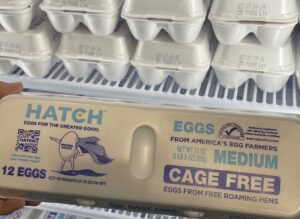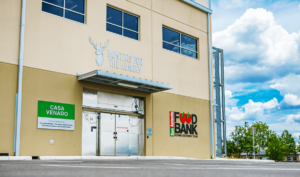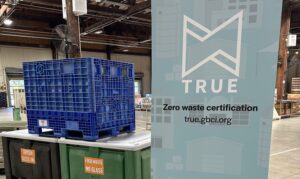Three Square Food Bank is taking food rescue to the next level with a cool tool — the blast chiller.
Common in commercial kitchens, blast chillers are not widely used in food rescue, though they are well-suited to the task. The fast-acting freezers can take food from thoroughly hot to freezing cold in about an hour, preserving food freshness and quality, while also preventing the spread of bacteria that can grow at lukewarm temperatures.
At Las Vegas-based Three Square, blast chilling is critical to the rescue of high-quality, protein-rich banquet food from conventions held at MGM Resorts International on the Strip. Last year, blast chilling enabled Three Square to rescue more than 325,000 pounds of high-end banquet food, which was distributed through about 60 agencies. “That’s 270,000 meals that would have gone to a landfill,” said Maurice Johnson, Director of Operations.

That volume represents a huge leap over the modest amount of food Three Square was rescuing before it started with blast chilling. Back then, Three Square sought to move hot food as quickly as possible from a resort donor to a non-profit that could serve it immediately. Now it moves blast-chilled food to freezers where it can remain for up to 90 days before being distributed. “We had to break our mindset from what we used to do,” Johnson said.
Food safety is a top reason Three Square uses blast chilling. The food it rescues from MGM has been prepared and maintained at a hot temperature, but not yet put out for service. Food & Drug Administration regulations say food must be brought from 135 degrees to 70 degrees within two hours, and from 70 degrees to refrigeration temperature (about 40 degrees) within four hours. Blast chillers accelerate that timeframe, keeping food safely out of the bacteria danger zone.
A side benefit is that blast-chilled food maintains its moisture better than food cooled more slowly, allowing it to retain its freshness and even aroma. The quality of the food remains essentially the same as before it was chilled.
Perfecting the food rescue process with blast-chilling was not a trivial matter. It took about a year of field testing with MGM and nearly 20 revisions of the standard operating procedure to develop a smooth system. Training at the food bank and at all levels of the donor kitchen — from the executive chef to the wait staff — is critical and ongoing. “The conversations are constantly around making sure we are all on the same page,” Johnson said.
Three Square has two walk-in blast chillers purchased for $125,000 apiece. More recently, MGM donated a blast-chilling van outfitted to bring down food temperatures even as the food is being transported.
One change the food bank made was to shrink the size of the aluminum pan in which the food is donated, allowing for greater storage and distribution options. Partner agencies order the donated meals through an online inventory management system and pick them up frozen, typically along with their normal food orders. “A great deal of pantries are giving the pans directly to individual families,” Johnson said, providing them with food for two to three days. “The feedback is through the roof,” he said.









